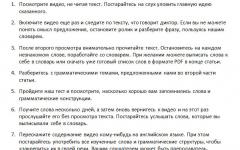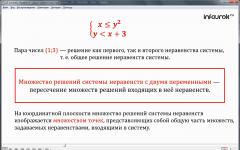Would you like to pause and flex your brains a little? The editors have found an unusual problem for you. At first glance, there is nothing complicated about it, but according to statistics, 99% of people answer incorrectly!
So, look carefully at the photo and answer how many matches there are on it.
If you count 10 matches, count again. In fact, there are fewer of them - some of them are simply reflected in the mirror body of the lighter. To simplify the task, we even sketched the reflection.

Do you think there are actually 8 matches? And again wrong! Still don't understand what the catch is? Then see the answer below.
But in fact, this photo required 7.5 (seven and a half) matches! The fact is that the match, which lies behind the lighter at the bottom right, will not fit entirely. In order not to hit the lighter, you need to use only half a match.

By the way, the most observant ones may notice that a piece of another match is reflected in the cap of the lighter. By and large, this match is already behind the scenes and can be ignored, but if you gave the answer 8.5, we are also ready to accept it as correct.

Well, did you like the problem? Then, invite your friends to also use their brains and share with them the link to the article.
We've all at one time or another tried to solve problems involving moving matches. Remember these? Simple, clear and quite interesting. We invite you to remember how this is done and solve these 10 exciting tasks. There will be no examples or mathematics here, you can try to think about them with your children. Each riddle comes with an answer. Well, let's go? 😉
1. Unfold the fish
Exercise. Rearrange three matches so that the fish swims in reverse direction. In other words, you need to rotate the fish 180 degrees horizontally.
Answer. To solve the problem, you need to move the matches that make up the lower part of the tail and body, as well as the lower fin of the fish. Let's move 2 matches up and one to the right, as shown in the diagram. Now the fish swims not to the right, but to the left.


2. Pick up the key
Exercise. In this problem, 10 matches are used to form a key. Move 4 matches to make three squares.

Answer. The problem is solved quite simply. The four matches that form that part of the key handle must be moved onto the key shaft so that 3 squares are laid out in a row.


3. Glass with cherry
Exercise. With the help of four matches, the shape of a glass is formed, inside of which lies a cherry. You need to move two matches so that the cherry is outside the glass. It is allowed to change the position of the glass in space, but its shape must remain unchanged.

Answer. The solution to this fairly well-known logical problem with 4 matches is based on the fact that we change the position of the glass by turning it over. The leftmost match goes down to the right, and the horizontal one moves to the right by half its length.


4. Seven squares
Exercise. Arrange 2 matches to form 7 squares.

Answer. To solve this it is enough difficult task, you need to think outside the box. Take any 2 matches that form the corner of the largest outer square and place them crosswise on top of each other in one of the small squares. So we get 3 squares 1 by 1 match and 4 squares with sides the length of half a match.


5. Hexagonal star
Exercise. You see a star consisting of 2 large triangles and 6 small ones. By moving 2 matches, make sure that there are 6 triangles left in the star.

Answer. Move the matches according to this pattern, and there will be 6 triangles.


6. Happy calf
Exercise. Move just two matches so that the calf faces the other way. At the same time, he should remain cheerful, that is, his tail should remain pointing up.

Answer. To look in the other direction, the calf simply needs to turn its head.


7. House made of glasses
Exercise. Arrange six matches so that two glasses make a house.

Answer. The two outer matches of each glass will make a roof and a wall, and the two matches at the base of the glasses just need to be moved.


8. Libra
Exercise. The scales are made up of nine matches and are not in a state of equilibrium. You need to move five matches into them so that the scales are in balance.

Answer. Lower the right side of the scale until it is level with the left. The match-base of the right side should remain motionless.
This board game very simple, but at the same time very exciting and gambling. Many today's adults can remember playing it at home and in the yards.
To play you need to have 11 matches. One of them is marked in some way (for example, a mark is made on it with a pencil or a burnt match is simply taken).
Rules of the game of matches
They play in turns, the order is agreed upon in advance.
First, the player takes all the matches into a handful of two palms (in the manner dice) and throws them on the table. You need to throw it in such a way that you can circle the pile of matches with your outstretched index finger and thumb. If it is not possible to circle, the matches are transferred.
After this, the player begins to pull out matches from the pile one by one. You need to pull it out very carefully so that not a single match, except the one being pulled out, moves. Each successfully pulled out regular match brings the player 10 points, and a marked one - 100. As soon as the player moves a match other than the one he pulled out, the turn goes to the opponents, and so on in turn. The winner is the one who gets greatest number points. You can arrange several cones and determine the winner based on the maximum amount of points scored.
Tricks
- A good throw is the key to a successful game. You need to throw the matches on the table hard enough so that the pile is loose. But at the same time, the matches should not roll too far so that you can circle the pile with your fingers.
- You need to think over a strategy for “freeing” the marked match and try to pull it out as early as possible without getting burned by the others.
- Sometimes you can remove a match with its head on the table and its body on a pile by gently pressing and rolling the head towards you with the pad of your finger, as shown in the photo. Practice in advance! Naturally, such a trick will not work with a burnt match.
- A match lying entirely on a pile can be removed by picking it up in the middle with an already pulled out match and throwing it up and to the side with a sharp movement.
- Carefully monitor the players' moves, don't miss the moment when they make their mistake!
Video game "Matches":
Fish
In the picture, a fish is laid out from 8 matches. Arrange 3 matches so that the fish “swims” in the opposite direction.
Key
In the picture, a key is laid out from 10 matches. Arrange 4 matches so that you get 3 squares.

Butterfly
In the drawing, a butterfly is laid out from 10 matches. Arrange 3 matches so that the butterfly changes its direction.

Christmas tree
In the drawing, a Christmas tree is laid out from 9 matches. Arrange 3 matches to form 4 equilateral triangles.

Two glasses
In the picture, two glasses are laid out from matches. Arrange 6 matches to make a house.

Scales
In the picture, scales are laid out from 9 matches. Arrange 5 matches so that the scales are level.

Donkey
The picture shows a donkey made from 5 matches. Move 1 match so that the donkey begins to look in the other direction.

horse
In the drawing, a horse is laid out from 6 matches. Move 1 match so that the horse begins to look in the other direction.

Crab
The picture of 10 matches shows a crab that crawls to the left. Arrange 3 matches so that the crab begins to crawl to the right.

Cherry in a glass
The author of this puzzle is the famous puzzle popularizer Martin Gardner. A cherry is placed in a glass made of 4 matches. Arrange 2 matches so that the cherry is outside the glass.

Cherry in a glass-2
A cherry is placed in a glass made of 4 matches. Arrange 1 match so that the cherry is outside the glass.

Cherry in a glass-3
A cherry is placed in a glass made of 5 matches. Arrange 2 matches so that the cherry is outside the glass.

Axe
In the picture, an ax is laid out from 9 matches. Arrange 5 matches so that you get 5 triangles.

House
The picture shows a house made from 11 matches. Arrange 2 matches so that you get 11 squares.

Letter "N"
In the picture, the letter “H” is laid out from 16 matches. Rearrange 4 matches so that you only have 2 squares left. There are two solutions (not counting mirror images).

Second b letter "N"
In the picture, the letter “H” is laid out from 15 matches. Arrange 2 matches so that you get 5 identical squares.

B ukva "T"
In the picture, the letter “T” is laid out from 9 matches. Arrange 2 matches so that you get 3 identical squares.

Bridge
The banks of the speech are made from 6 matches. The width of the river is slightly greater than the length of one match. It is necessary to build a match bridge from 4 matches in such a way that none of the matches of this bridge touches the river between the matches, but only the matches touch the banks.

Monument
In the drawing, a monument is laid out from 12 matches. Arrange 5 matches so that you get 3 identical squares. There are two solutions (not counting mirror images).

Snake
In the drawing, a monument is laid out from 12 matches. Arrange 5 matches so that you get 3 identical squares.

Names
In the picture, 12 matches are made up of male name Tolya. Arrange one match so that it turns out female name. In this case, all matches must be used.

Matches and thimble
Place the thimble on three matches, observing the following conditions:
1. The thimble should not touch the table.
2. The thimble should not touch the sulfur heads.
3. Sulfur match heads should not touch the table.
4. The thimble should touch all three matches.
Note: Matches must not be broken, bent or cracked. The thimble and matches must be placed completely on the surface of the table; it is prohibited for anything to hang from the table. There are 6 matches in front of you. Move them so that all matches intersect. Moreover, each of the 6 matches must be in contact with 5 other matches. You can't break matches.

Increase in matches
In front of you are 12 matches - 4 columns, each with 3 matches. You need to rearrange 3 matches so that there are 4 matches in each vertical and horizontal row. There are 6 possible solutions to this puzzle.

More than 200 years have passed since the first matches made by the French chemist Jean Chancel appeared, but this household item does not lose its relevance. And even despite the fact that people everywhere began to use gas and electric lighters, every home has a box of matches in reserve. We present to users 10 life hacks using matches.
Top 10 life hacks with matches
- The first few are very simple and probably familiar to many, and are also widely and universally used. A match can be used instead of a pen, which is not at hand, but you urgently need to write down something, for example, a phone number. In the same ballpoint pen, a piece of wooden base can be used to lengthen the rod if it is too short and does not fit the length of the body.
- Another familiarity with matches is the use of the latter to make cotton swabs. It is enough to have cotton wool, and it is easy to get sticks. and the oldest useful advice, which is hundreds of years old, is to use a pointed match to clean the interdental space.
- As you know, you will be lost in the forest without matches, and if they get wet, then there will be no way to light a fire. It’s another matter if you prepare moisture-resistant matches in advance before going on a hike, covering them with colorless nail polish. In addition, treated with this composition they will burn better.
- Everyone appreciates the advantages of a hot-melt glue gun in everyday life, because it can help fix a child’s toy and repair furniture. This hot melt adhesive can be easily made mobile. Apply a drop of glue below the head of the match, give it the opportunity to harden, and when it is needed, simply move the head along the match and the molten composition can be used for its intended purpose.
- 10 life hacks with matches also included this advice for every day: if the flame of a burning match is constantly extinguished by the wind, it is enough to make small burrs at the base of the head with a knife or blade.
- It happens that the diameter of the hole drilled in the wall is much wider than the screw being screwed in. It is easy to reduce it and make it to size if you hammer matches around the screw. By the way, such fastening will hold better.
- The top 10 life hacks with matches also included advice on making a self-igniting device. It’s every boy’s dream, and it can be useful in everyday life. To do this, you need to purchase caps in any children's toy store, remove the plugs from them and empty the contents of the cartridges. Dilute the powder with water to obtain viscous consistency and immerse the matches in it with their heads down. All that remains is to dry them and use them for their intended purpose, but remember that such a product can catch fire from any slight touch.
- The benefits of such a life hack with matches can be considered doubtful, but it already exists, and therefore should be highlighted. From all the familiar wooden devices coated with sulfur, you can make a rocket. Wrap the head of a match in foil on a paper base, place the improvised rocket on a suitable installation and set it on fire.
- The familiar matches can be used to make all kinds of crafts - houses, towers, towns. Using them instead of a construction set, you can spend quality time with your child and create your own unique masterpiece of home art.
- Matches can also be used as a puzzle. Invite your child to make 4 triangles from 6 matches. To do this, you need to build a triangle of 3 matches, and place the remaining three in a pyramid.








Here they are useful tips for every day. As you can see, matches can be used not only for their intended purpose, but also to come up with something of your own, useful and necessary.








